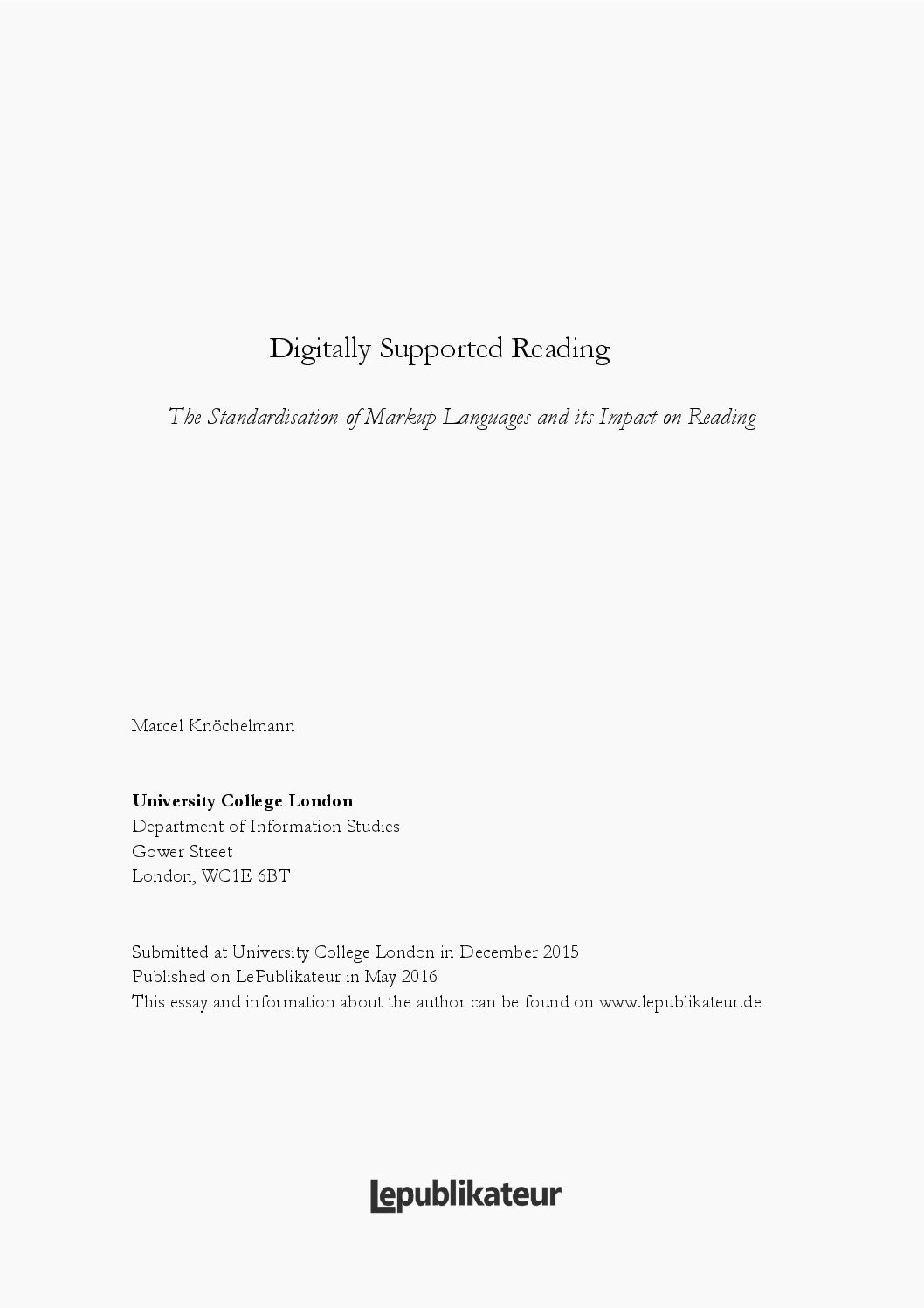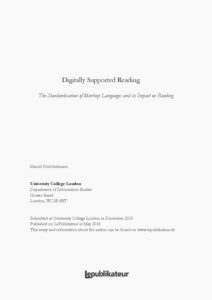Digitally Supported Reading
The Standardisation of Markup Languages and its Impact on Reading
A text is an “ordered hierarchy of content objects” (DeRose et al., 1990, p. 6) that reveals most information by combination of its discrete entities as well as by intertextual referencing. With a long history of reading, humans developed skills to master these tasks. The moment of the standardisation of markup languages though, marks an important moment in the history of reading. Markup languages changed the way machines support human reading, which in return changed how humans read. This essay will explore the significance of markup languages in the history of reading by specifying how they changed reading.
As this essay focusses on markup languages, device-specific displaying of texts (hardware) and text encoding will not be described. Though ASCII or Unicode encoding build the foundation for machines to display and manipulate characters, encoding does not help machines to interpret the meaning of content in the way markup languages do. Furthermore, within markup languages, this essay focusses on those developments which affect reading in general rather than specific markup languages which act in fields like financial analysis or mathematics, as shown by Russell (2005).

